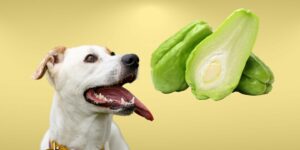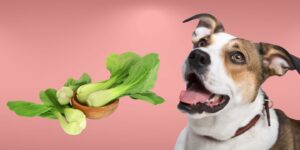Can dogs eat lettuce? Yes, dogs can safely consume lettuce as long as it is given in moderation. Lettuce is not toxic to dogs and can be a healthy addition to their diet, providing vitamins and minerals that can benefit their health. However, lettuce can cause digestive issues for dogs if consumed in large amounts due to its high water content. It is essential to choose the right type of lettuce for your dog based on their specific needs and preferences, and always consult with your veterinarian before making any changes to your dog's diet.
Types of Lettuce for Dogs
There are several types of lettuce that can be safely given to dogs, each with its nutritional benefits and potential drawbacks.
Romaine Lettuce
Romaine lettuce is a popular choice due to its high nutritional content. It is rich in vitamins A, C, and K, as well as calcium and potassium. However, it also contains a higher amount of fiber, which may cause digestive issues in some dogs.
Iceberg Lettuce
Iceberg lettuce is one of the most common types of lettuce and is often used in salads. It is low in calories and has a high water content, making it a good option for weight management. However, it is also low in nutrients compared to other types of lettuce.
Butterhead Lettuce
Butterhead lettuce, also known as Boston or Bibb lettuce, has a mild flavor and tender texture. It is a good source of vitamins A and K, as well as folate. This type of lettuce can be a good option for dogs with sensitive stomachs.
Green Leaf and Red Leaf Lettuce
Both green leaf and red leaf lettuce are good options for dogs, as they are high in nutrients and low in calories. They are also rich in antioxidants, which can help support a healthy immune system.
Preparing Lettuce for Dogs
It is important to properly prepare lettuce before giving it to your dog. This will help ensure that it is safe for consumption and can be easily digested.
Washing
Always wash lettuce thoroughly before feeding it to your dog. This will help remove any dirt, pesticides, or harmful bacteria that may be present.
Chopping
Chop the lettuce into small, bite-sized pieces to make it easier for your dog to chew and digest. This can also help prevent choking hazards.
Mixing with Other Foods
Consider mixing lettuce with other dog-friendly vegetables or fruits, such as carrots or apples. This can make the lettuce more appealing to your dog and provide additional nutrients.
Potential Risks and Side Effects
While lettuce is generally safe for dogs to eat, there are some potential risks and side effects to be aware of.
Choking Hazard
As mentioned earlier, it is important to chop lettuce into small pieces to prevent choking hazards. Some dogs may try to swallow large pieces of lettuce whole, which could lead to choking.
Digestive Issues
Lettuce is high in fiber and water content, which can cause digestive issues such as diarrhea or gas in some dogs, especially if consumed in large amounts.
Allergic Reactions
While rare, some dogs may be allergic to lettuce or develop an intolerance over time. If you notice any signs of an allergic reaction, such as itching, swelling, or difficulty breathing, discontinue feeding lettuce to your dog and consult your veterinarian.
Alternatives to Lettuce for Dogs
If you are looking for other healthy vegetables to add to your dog's diet, consider the following options:
Spinach
Spinach is a nutrient-dense leafy green that is high in vitamins A, C, and K, as well as iron and calcium. However, it should be given in moderation due to its high oxalate content.
Carrots
Carrots are a low-calorie, high-fiber vegetable that can provide a good source of vitamins A, C, and K, as well as potassium.
Green Beans
Green beans are a low-calorie, high-fiber vegetable that is rich in vitamins A, C, and K, as well as calcium and iron.
Bell Peppers
Bell peppers are a low-calorie, high-fiber vegetable that is rich in vitamins A, C, and E, as well as antioxidants. However, it is important to remove the seeds and membrane before feeding them to your dog.











